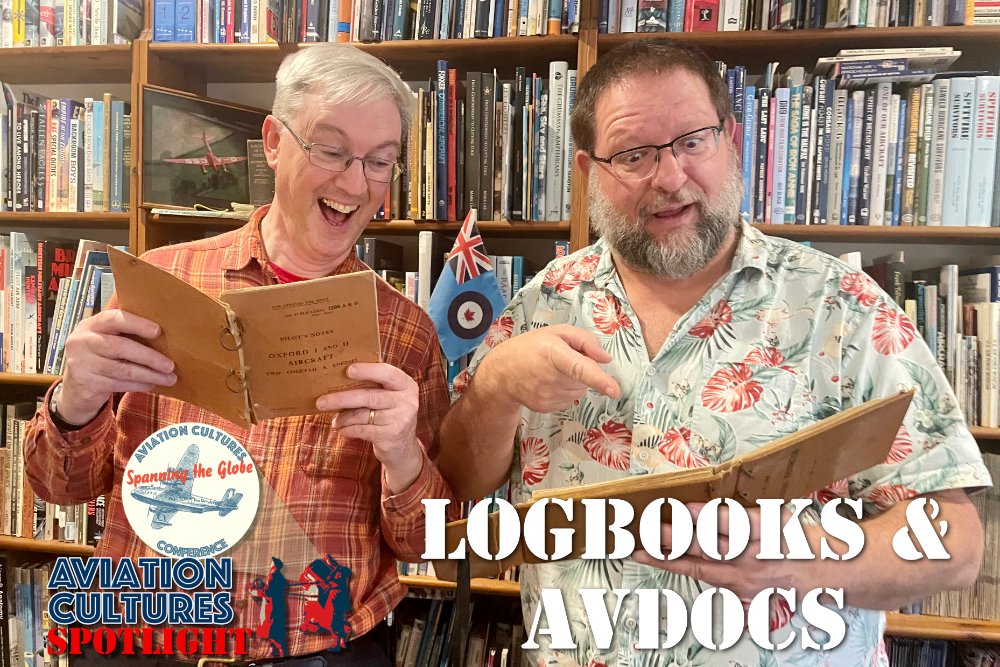Phil Vabre and James Kightly of Aviation Cultures presented the Spotlight on Logbooks and Avdocs on the weekend of the 8th – 9th November. The subject area follows up on a session within Aviation Cultures Mk VI, back in 2022. It explored the purposes, functions, designs, usages, limitations and interpretation of aviation documentation. The recordings of the two sessions, and the presenters details and topics are included below.
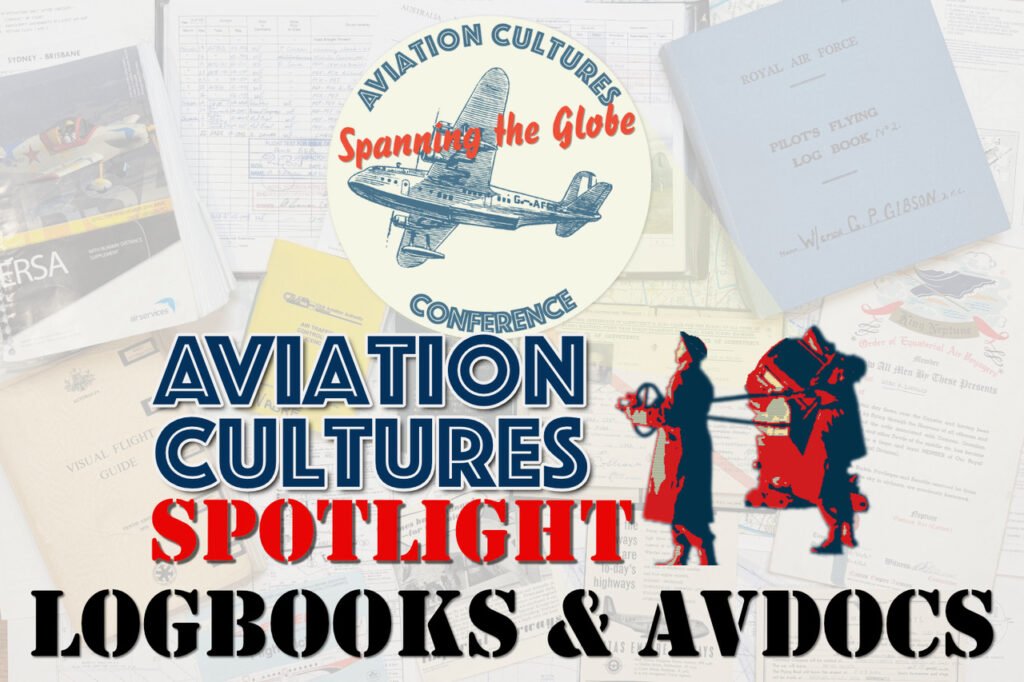
SESSION 1: Saturday 8 Nov 0900-1100 UTC ( 8-10pm Australia AEDT, 4-6am Americas east coast, 1-3am Americas west coast). Speakers: Mr Ken Delve, Aviation History Research Centre – ‘RAF, Commonwealth & Allied Aircrew Logbooks from World War Two‘; Dr Dan Ellin, International Bomber Command Centre – ‘Logbooks in the International Bomber Command Centre Digital Archive, an inclusive approach to dealing with difficult heritage‘; Dr Peter Elliott FRAeS Curator Emeritus, RAF Museum – ‘Read The F***ing Manual: A Primer on Royal Air Force and Royal Flying Corps Training and Flying Manuals.‘
The session Recording will be uploaded here soon.
SESSION 2: Saturday 8 Nov 2100-2300 UTC ( 8 Nov 3-5pm Moose Jaw/Bemidji, 4-6pm Americas east coast, 1-3pm Americas west coast, 8-10am Sunday 9 Nov, Australia AEDT). Speakers: Dr Peter Hobbins, State Library of NSW with ‘Legal eagles: using legal sources to cross-examine aviation history‘; Mr Edward Soye, Aviation Cultures – ‘Pilots Notes–Generally: Utilizing period RCAF / RAF aircraft and flying training manuals‘; Ms Ester Aube, AirCorps Library – ‘Aircraft Technical Documentation: Military Organizational Systems & Their Development During WWII’; Mr Phil Vabre, Civil Aviation Historical Society & Airways Museum, Aviation Cultures – ‘Circe: A 72-Year Detective Story‘.
The session Recording will be uploaded here soon.
Session One Presentations and Biographies:
Spotlight on Mr Ken Mr Ken Delve, Aviation History Research Centre

Mr Ken Delve presents on the topic of ‘RAF, Commonwealth & Allied Aircrew Logbooks from World War Two.’ Ken Delve served in the RAF for 20 years, as a Navigator on the Canberra (PR.9) and the Tornado (GR.1 and GR.1A), as well as tours as an instructor in flying training, and on assignment to the Bomber Command Museum Appeal at the RAF Museum. A graduate of Ancient History and Archaeology he appeared an obvious choice to his first CO on 39 Squadron to become the Squadron Historian! This led him to research the history of the unit from official sources and through organizing reunions of veterans (‘old boys’ as they were known). From this grew the passion to capture the stories and make them available to a wider audience, and his first book was ‘The Winged Bomb: a history of 39 Squadron’. It was very much the stories from the veterans that was the main driver.
Taking on similar secondary duties as Squadron and Station Historian throughout his flying career, Ken continued to write books and articles on a range of military aviation subjects. On leaving the RAF he became Editor of the respected aviation enthusiast magazine, ‘FlyPast’, a role that enabled him to meet numerous veterans, as well as enthusiasts, historians and warbird owners. The passion remains, and Ken has published over 55 books and countless articles. The advent of Amazon and Kindle has provided a new and exciting outlet to spread the stories to an even wider audience, and to keep alive the tales of the amazing men and women who served in the air forces of their countries. Ken is the founder of the Aviation History Research Centre (AHRC), a Trustee of the RAF Heraldry Trust, a volunteer and researcher at the RAF Marham Aviation Heritage Centre, Chair of Trustees of Veterans Central.
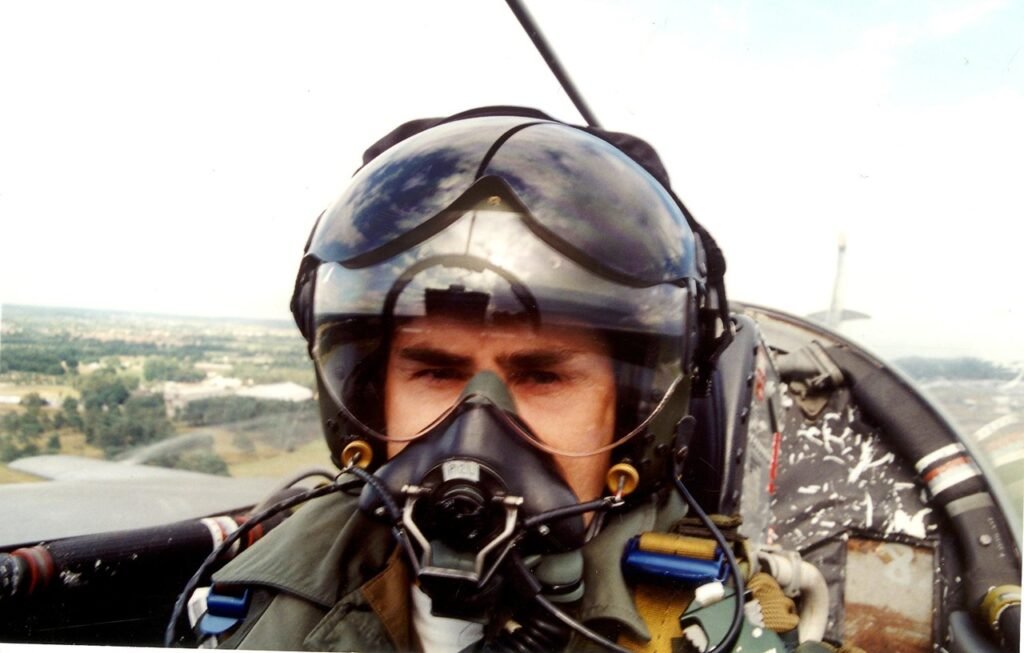
Ken says, “In 30+ years of researching and writing aviation history, one thing I realised very early on was that research never stops, and that there is still a large amount of information to uncover. Log Books are one part of that data, and at the RAF Marham Aviation Heritage Centre we frequently have people bring in Log Books that they would like help in decoding, and also to find out more information to provide context to the Log Book entries.”
It was from this research help that led Ken to produce his introductory guide to understanding Log Books. He hopes it will motivate people who have Log Books from relatives to try to find out more about them. Ken’s presentation will focus on Log Books from World War Two and will take brief looks at content and context; how to find out more about an entry – the challenges and pitfalls.
Spotlight on Dr Dan Ellin, International Bomber Command Centre Digital Archivist

A Social and Cultural historian, Dan is a graduate of the University of Lincoln and has a PhD from the University of Warwick. He became interested in Bomber Command after working in a warehouse that used to be an aircraft hangar. His research examines the lives of the men and women who served with Bomber Command during the Second World War, and how they have been remembered.
Dan has worked on the IBCC Digital archive since 2015. Since then, the archive has recorded over 1,200 oral history interviews and digitised over 2,500 individual collections of letters, diaries, logbooks and photographs. Many of these collections tell stories previously unheard by anyone other than their families. As curator of the IBCC exhibition, he has been responsible for the content and tone of the three gallery spaces of the IBCC Exhibition and the concept of an ‘orchestra of voices.’
Dan’s topic in SESSION 1 of the forthcoming Aviation Cultures Spotlight on Logbooks and Avdocs is ‘Logbooks in the International Bomber Command Centre Digital Archive, an inclusive approach to dealing with difficult heritage.‘
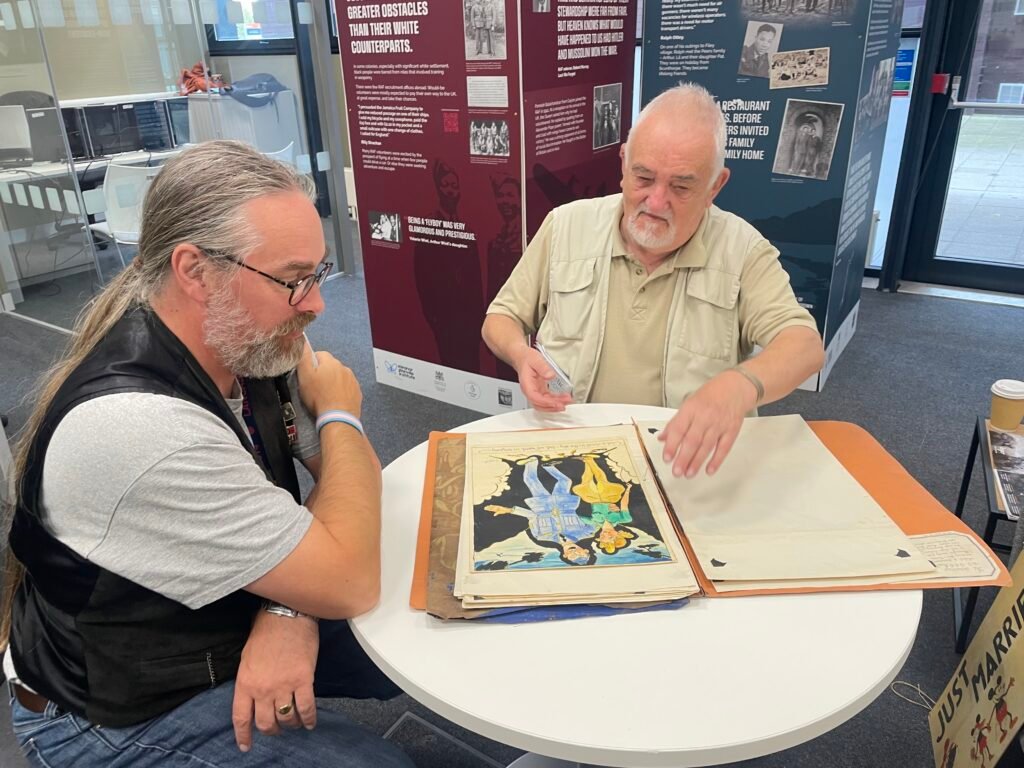
Dan explains how the IBCC Digital Archive’s ethos of remembrance, recognition, and reconciliation as an approach to difficult heritage, led to the comprehensive way in which logbooks are described in the archive. To date, over 800 logbooks have been published in the archive; many more are currently being worked on by volunteers. They vary from Reginald Thomas Black’s logbook who was killed in action on his first operation as an air gunner with 9 Squadron on 18 December 1939, to David Donaldson’s who completed 86 operations as a pilot with 149, 57, 156, and 192 Squadrons.
As well as a comprehensive description, cataloguing metadata capture aircraft types, units, the dates of operations, and the places they were flown to, Dan discussed what ‘gen’ can be gleaned from logbooks and will also explain how to get the most from simple and advanced searches of the IBCC Digital Archive.
Spotlight on Dr Peter Elliott FRAeS, Curator Emeritus, RAF Museum

Peter Elliott will be presents in SESSION 1 of the forthcoming Aviation Cultures Spotlight on Logbooks and Avdocs, speaking about ‘Read The F***ing Manual: A Primer on Royal Air Force and Royal Flying Corps Training and Flying Manuals.‘
Peter Elliott’s career began as a technical librarian in the UK Ministry of Defence. In 1984 he joined the Royal Air Force Museum, retiring in 2016 as Head of Archives and being appointed the Museum’s first Curator Emeritus. He has an MA in Archives and Records Management, and his PhD at the University of Hertfordshire examined the development of aviation museums in the United Kingdom.
In retirement Peter remains involved in aviation and archives as Honorary Archivist to the Honourable Company of Air Pilots, Consultant Archivist to the Royal Aeronautical Society (RAeS) and Chair of the Library Committee at the Royal Air Force Club. He is a Fellow of the RAeS, and in 2024 received the Society’s Distinguished Service Award in recognition of his work with the RAeS Historical Group.
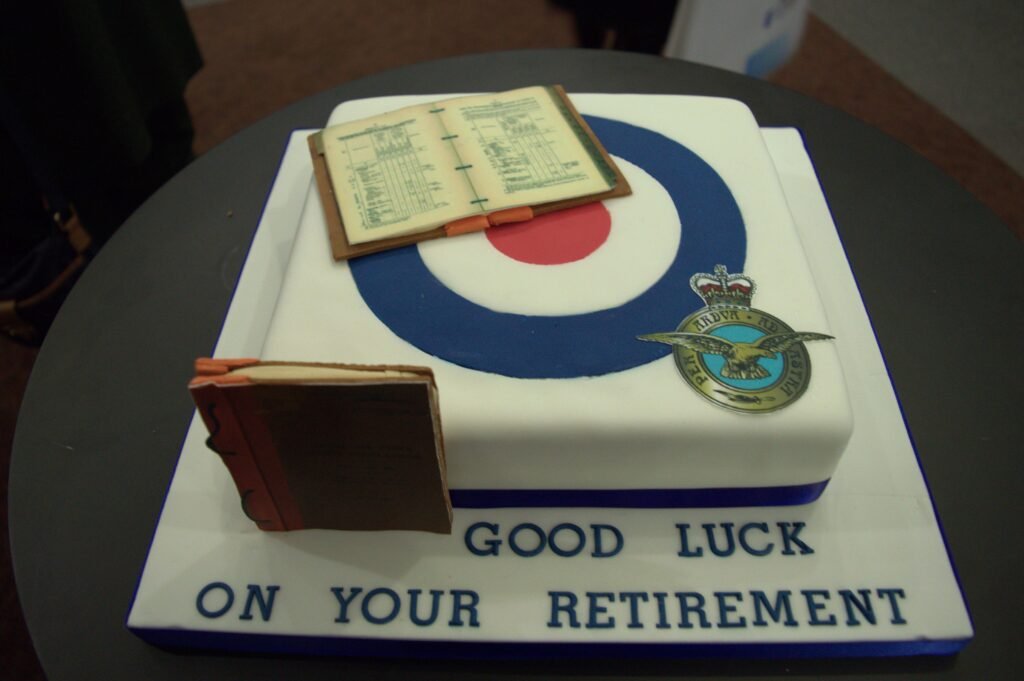
Peter’s presentation describes the various documents issued by the Royal Air Force and Royal Flying Corps to support their operations. Many of these are technical manuals for aircraft, engines, instruments, weapons and other hardware, but they also include training material and administrative material. Air Ministry Pamphlets were mostly aimed at civilians, covering topics such as information on careers, while Air Ministry Weekly Orders were used to circulate changes to regulations and make other announcements.
Using examples from the large collection held by the RAF Museum, the presentation will explore the wide variety of information that these documents contain, offer suggestions regarding repositories that hold them, and reveal the official way to wake up an officer!
Session Two Presentations and Biographies:
Spotlight on Dr Peter Hobbins, State Library of NSW

Dr Peter Hobbins speaks about ‘Legal eagles: using legal sources to cross-examine aviation history.’ Who doesn’t love lawyers? After all, they are the best people to adjudicate the standards and procedures of the aviation industry, right? Plus, everybody always tells the truth in court, don’t they?
Peter’s presentation argues that legal sources – including legislation, royal commissions, judicial inquiries, lawsuits, prosecutions and coronial inquests – offer vital insights for aviation historians. Such materials are often ignored because they sit outside the industry, yet that is precisely their value.Legal processes are intended to represent the expectations and standards of the community, in order to punish crimes, recompense damages and rewrite the rules. Lawyers, judges and coroners often ask difficult questions, producing evidence that can be both fascinating and insightful. The outcomes may also be unsettling, leading us to challenge what we thought we knew about the past.
This presentation will cross-examine two case studies to suggest how legal archives might enrich our understanding of aviation history. It also offers tips on where to look and what to expect – as well as a few pitfalls to avoid. Peter swears it’s all true.
Dr Peter Hobbins is a rouseabout historian and curator, with interests as wide as snakebite, scientific medicine and shipwrecks. In his day job, he leads the manuscript acquisition team at the State Library of NSW in Sydney. Outside of work hours, Peter is a widely published aviation historian, focusing on aircraft accidents and what they reveal. Spanning both military and civil aviation, his topics include safety cultures, attributions of blame, flight recorders and simulators. Peter is also one of the founders, and a much-respected elder, of Aviation Cultures. Peter is neither an aviator nor a lawyer. It’s safer that way.
Spotlight on Mr Edward P. Soye, Aviation Cultures
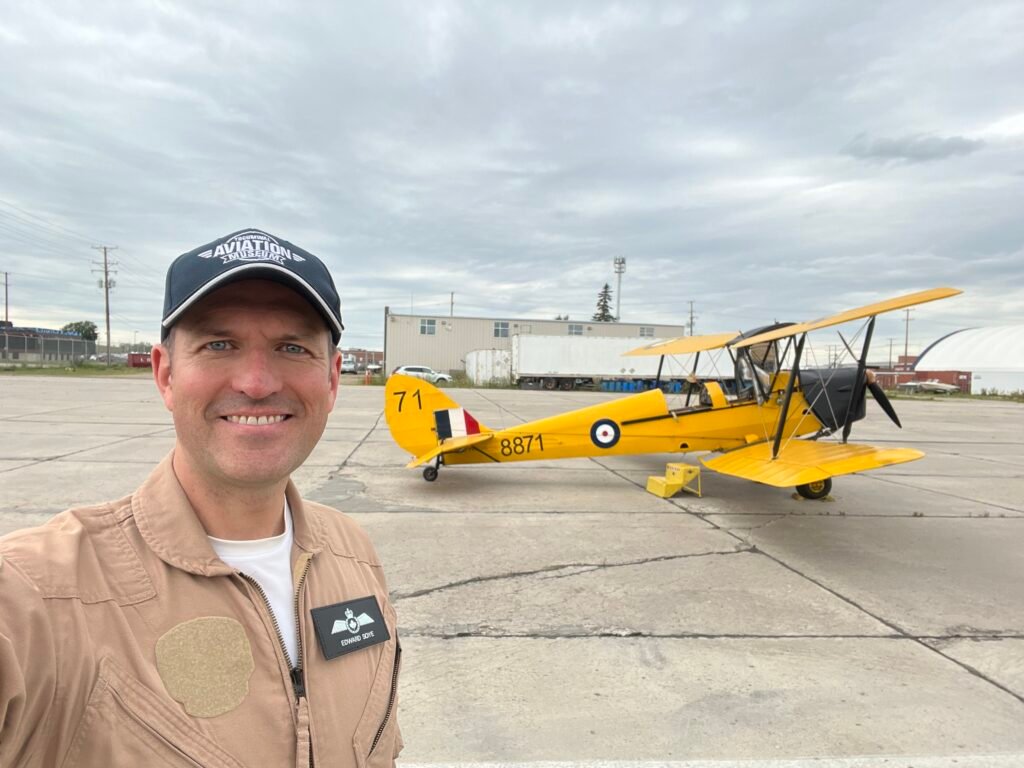
Mr Edward Soye presents on ‘Pilots Notes–Generally: Utilizing period RCAF / RAF aircraft and flying training manuals.‘ Edward P. Soye is a Canadian pilot and aviation historian who researches, flies and writes about both contemporary and historic military aircraft. He earned a BA in History from the University of Toronto and an MA in War Studies from the Royal Military College of Canada. In terms of flying, he first soloed an aircraft when he was 16 and is currently serving as a pilot in the Royal Canadian Air Force. More specifically, he is a Qualified Flying Instructor and Standards Officer on the CT-156 Harvard II at 2 Canadian Forces Flying Training School in Moose Jaw, Saskatchewan. In terms of vintage aircraft, he has flown and/or been an air show performer in First World War (replica) fighters, 1940s/50s heavy taildraggers and 1960s turbojets. Drawing on this mixture of academic study and first-hand experience, he brings aviation history to life through interpreting the past sharing it with others.
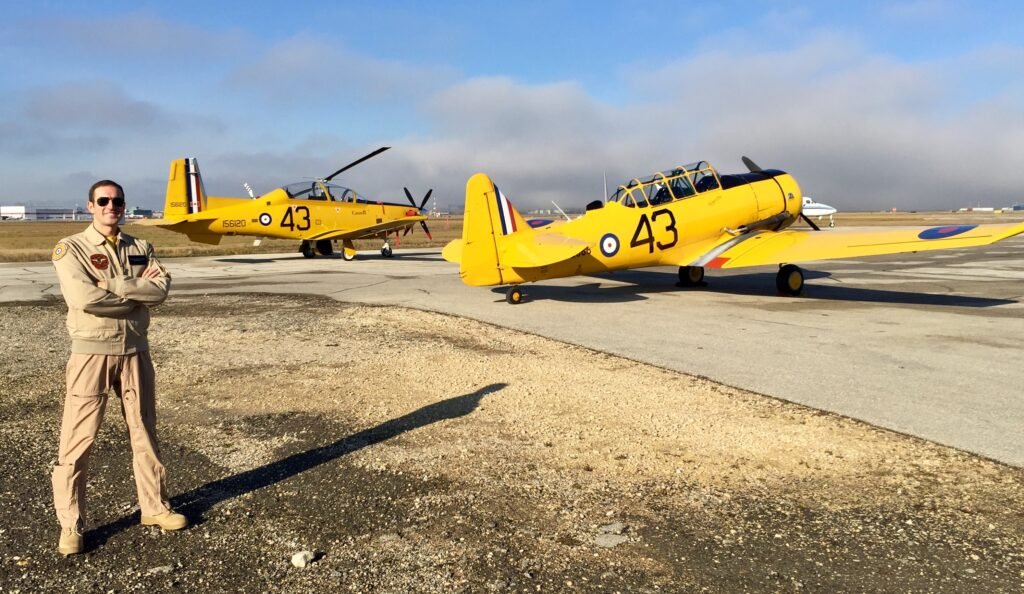
Have you ever picked up one of the very thin, 1940s or 1950s Royal Air Force “Pilots Notes for…” and wondered why they’re so brief compared with a modern aircraft handbook? Or wondered how they relate to other period pilot publications? In his presentation, Edward Soye will delve into these questions from several perspectives.
First, as a civilian pilot who learned to fly early in the 21st century. Secondly, as an historian, looking at period publications as important primary sources to understand how these machines were originally intended to be operated. And, finally, as a serving pilot and flying instructor in the modern Royal Canadian Air Force. Edward has been flying vintage (and more recently, modern) military aircraft for over 20 years. As part of that journey, he was exposed to each of these perspectives in sequence – shaping his approach as a vintage aircraft pilot.
As a result of earning his RCAF pilot wings later in life (in his late 30s), Edward gained a fuller appreciation for the interplay between Pilots Notes / Aircraft Operating Instructions and the broader ecosystem of related military flying publications. Through this lens, he has delved into a personal collection of publications that includes examples of military aircraft and training manuals dating from each decade between 1914 and the present.
Reflecting on his own journey with vintage and modern military aircraft, he addresses some of the lessons he’s learned about the role of period publications in preparing to fly historic military aircraft. Ultimately, Edward argues that for a modern pilot – particularly a civilian one – who wants to operate vintage military aircraft, Pilots Notes themselves are just the tip of the iceberg when it comes to relevant manuals and documentation.
Spotlight on Ms Ester Aube – AirCorps Library Manager

Ester Aube speaks about ‘Aircraft Technical Documentation: Military Organizational Systems & Their Development During WWII.‘ Ester received her Bachelor of Science from the University of Delaware in 2014 with a degree in Art Conservation and Art History. Her schooling, coupled with an additional background in museum work, gives Ester a unique viewpoint concerning both the historical nature and physical fragility of the resources that she is in charge of digitally preserving, and making available to the public via the AirCorps Library website.
Since 2016, Ester has become enamored with the technical history behind WWII aircraft, including learning about manufacturer part numbering systems, document numbering systems, and the draftsmen who created the engineering data that the Warbird restoration industry would be unable to function without.
The 27 years between the end of World War I and World War II saw some of history’s greatest advancements in aviation technology. These feats were lauded by the general public, but are no more impressive than the accomplishments of the relatively unknown individuals who were writing and organizing the technical data that accompanied these newly developed aircraft. During one of the most chaotic periods of American history, these individuals helped to formalize an entirely new system for organizing military aviation documentation – a system that would continue to thrive, and eventually became the basis for modern military document organization.

The early document organizational structure was titled the “Technical Order System”, or TO System, and although less exhaustive than the Dewey Decimal System, was specifically designed to organize the tens of thousands of documents that the military was publishing and distributing for actively flying aircraft during WWII. A knowledge of the TO System is a valuable tool for researchers, librarians, and archivists alike, as it can assist in locating documents quickly by topics both broad and specific, and provide unexpected guidance on cataloging best practices.
Spotlight on Mr Phil Vabre, Civil Aviation Historical Society

Phil Vabre’s presentation is ‘Circe: A 70-year detective story‘. In February 1942 the Short Empire flying boat G-AETZ Circe disappeared without trace on a flight over the Indian Ocean. Despite extensive wartime searching and postwar research, it remained a mystery. Until…
Phil Vabre is President of the Civil Aviation Historical Society & Airways Museum at Essendon airport and Secretary of Aviation Cultures Conference Inc. Additionally, he is on the committees of the Aviation Historical Society of Australia and the Aviation Museums National Network. Phil recently retired after a long career as an Air Traffic Controller, with a background in aviation human factors and safety management. He is a private pilot and owner/custodian of a venerable Cessna 175A that is older than he is.
As a result, Phil has an exceptional range of experience in using, creating, interpreting and presenting aviation documents. From his own logbooks to some of the world’s most famous fliers, from interpreting aviation communications from both the tower and the cockpit, and from using government documents to presenting on them interestingly, Phil has had firsthand experience. Phil is also currently working on a book about Australia’s civil Empire flying boats and their bases.
Phil’s explanation of the Short Empire flying boat Circe‘s story shows how he was able to find and use a mix of operational and non-operational archival documents to prove what happened all those years ago.
And lastly, your hosts for the event are Aviation Cultures regulars, current President Mr James Kightly, (on the left) and current Secretary, Mr Phil Vabre. We alternated session chair and backup though both sessions, and are very appreciative of our audience’s participation!
